The Ottoman Monuments in Athens are just a handful of monuments. They may be prominent, they may be central, however, they are not easily recognized as Ottoman monuments. Even Athenians may find it difficult to realize that certain monuments come from the Ottoman era.
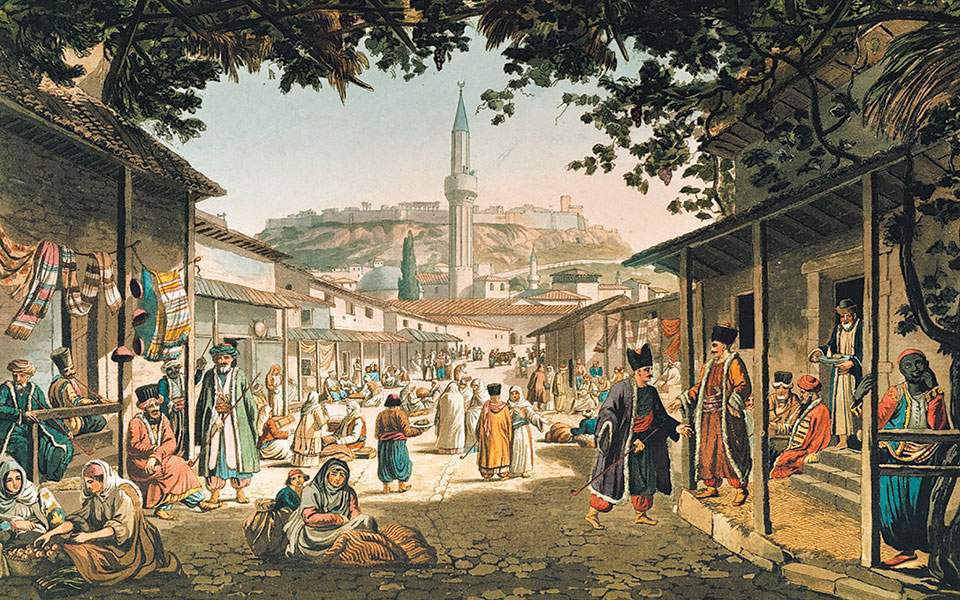
You may wonder why there are so few Ottoman monuments in Athens, especially if you already know that Athens remained under the Ottomans’ rule for almost 400 years (1456-1833).
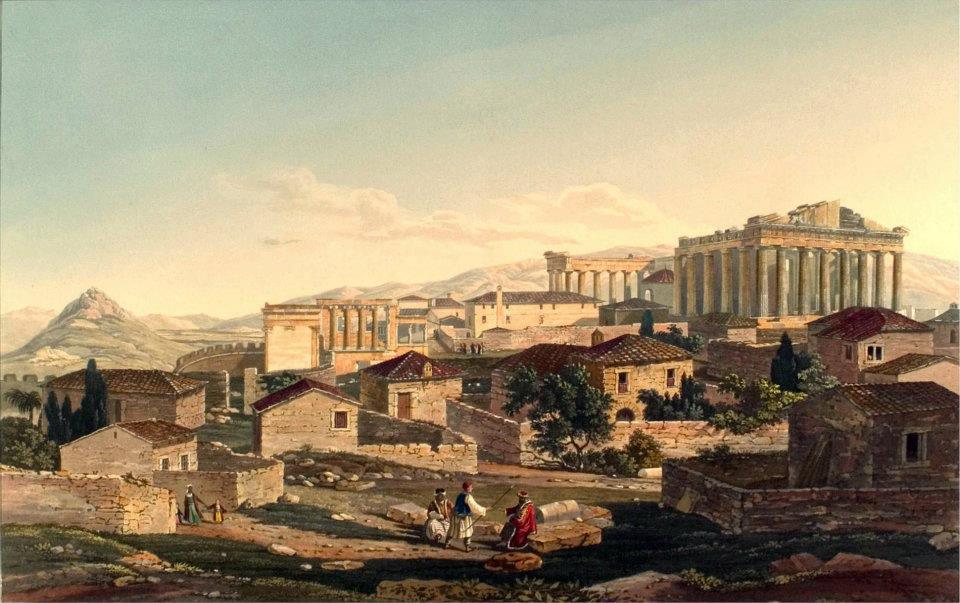
There are two main reasons explaining the scarcity of Ottoman monuments in Athens:
1. Following the Greek War of Independence which broke in the Peloponnese (1821), the vast majority of the Ottoman buildings and constructions were hastily demolished right after Athens’ liberation in 1833.
The newly liberated Greeks wanted only to be associated with their ancient history and not at all with anything that would remind them of the long Ottoman Occupation.
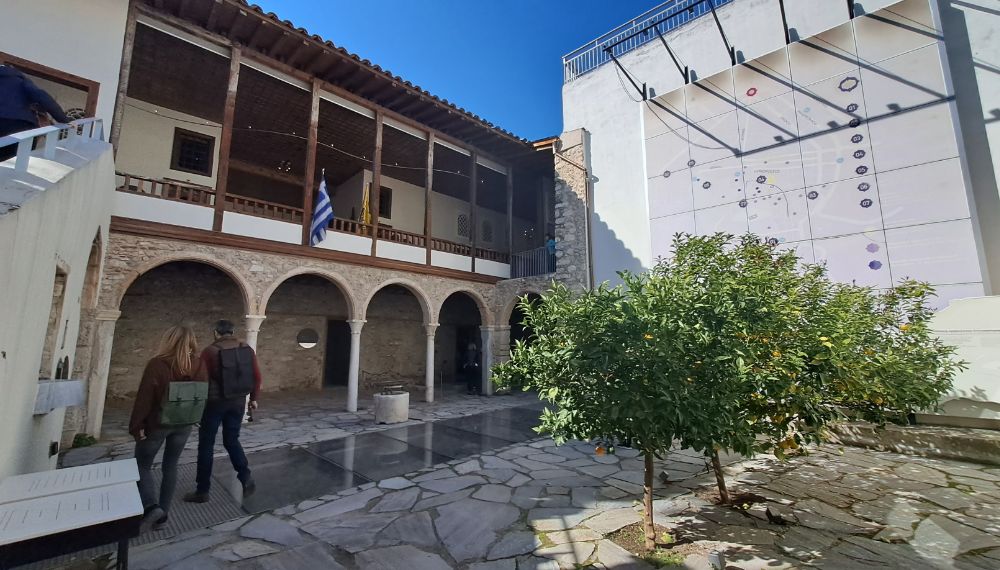
2. Athens, contrary to its future development as a capital and the largest Greek city today, at the time of the Ottoman Occupation, was just a small provincial town, so not so many important Ottoman buildings were erected. This was in notable contrast to the vibrant metropolis of Thessaloniki, where today you can find many more Ottoman monuments.
In this post, you will find information on the still-standing and existing Ottoman monuments in Athens. A visitor to Athens can easily see them all, as most of them are concentrated in beautiful Plaka, around the Roman Agora of Athens.
Some of the links below are affiliate links. That means I may make a commission if you click and buy. The commission comes at no additional cost to you.
Brief History of Ottoman Athens (1456-1833)
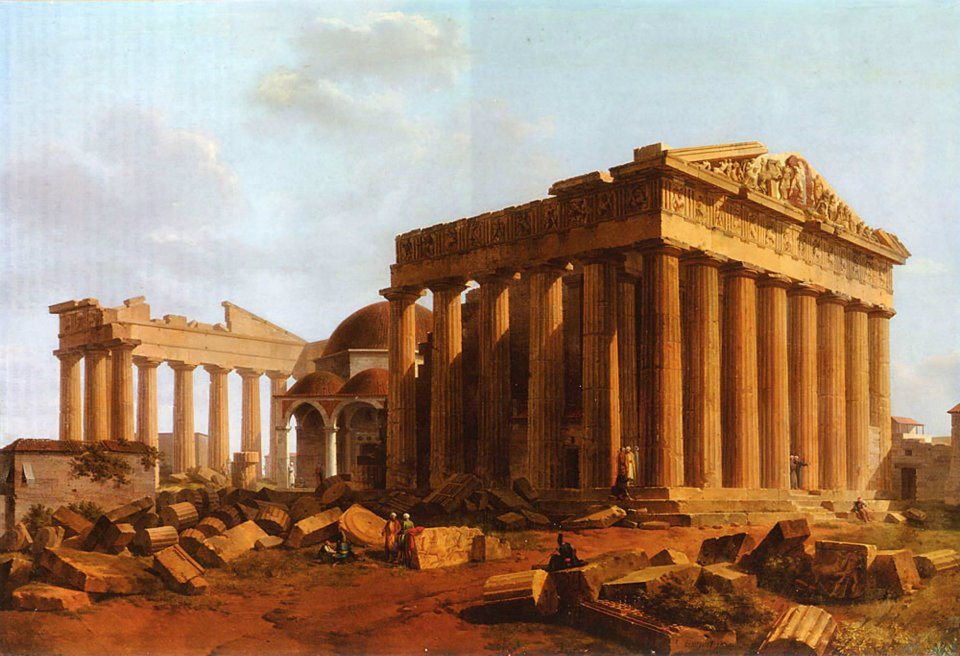
The Ottomans conquered Athens in 1456, while it was under Frankish Duke Acciaiuoli’s rule. Sultan Mehmed II was an educated man and was impressed by the ancient monuments of Athens when he first visited it in 1458. He respected the ancient ruins, he offered Athenians some basic freedom and their local authorities.
However, the ancient citadel of Acropolis, the symbol of Athens, was quickly turned into the Ismainti mosque, and the Erechtheion temple was used to accommodate the Sultan’s harem.
Until then the temples in Acropolis were in very good condition and especially the Parthenon and the Propylaea were almost completely intact.
Ottoman Monuments in Athens
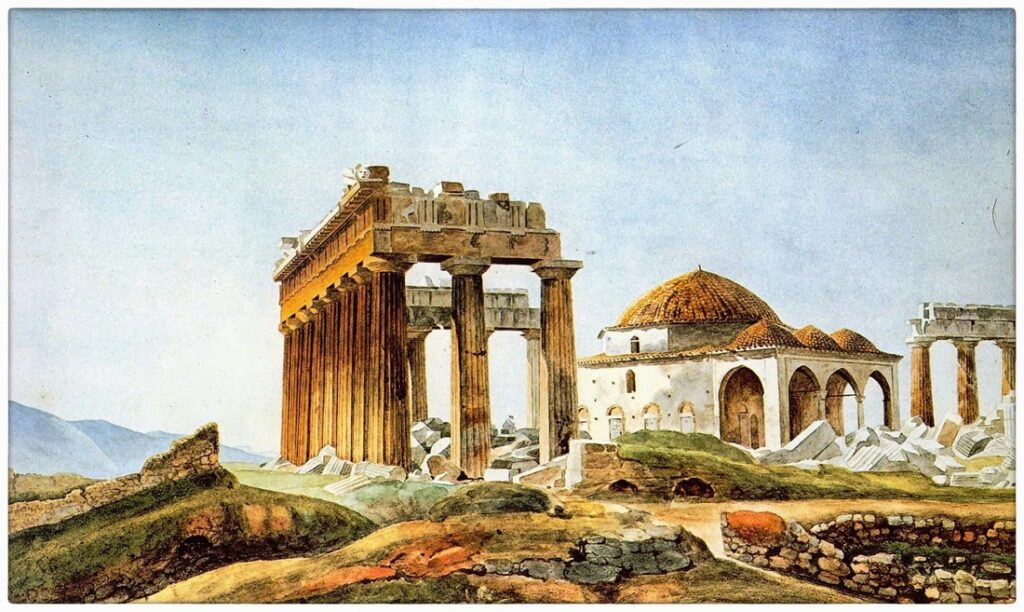
Ismainti Cami (Mosque) at the Parthenon
Going back in history, and around the 6th century AD, the Christian (Byzantine) Kings of the time turned the internal part of the Parthenon into a Byzantine church, dedicated to the Virgin Mary.
The Ottomans, some 900 years later turned this church into the Ismainti mosque, covering it with limestone the Christian symbols, and adding a minaret.
The Acropolis hill, besides the Ismainti mosque and the Erechteion being used as a harem, housed also a large number of buildings and storage rooms, and one of the rooms was inside the Parthenon. This is where the Ottomans kept their gunpowder.
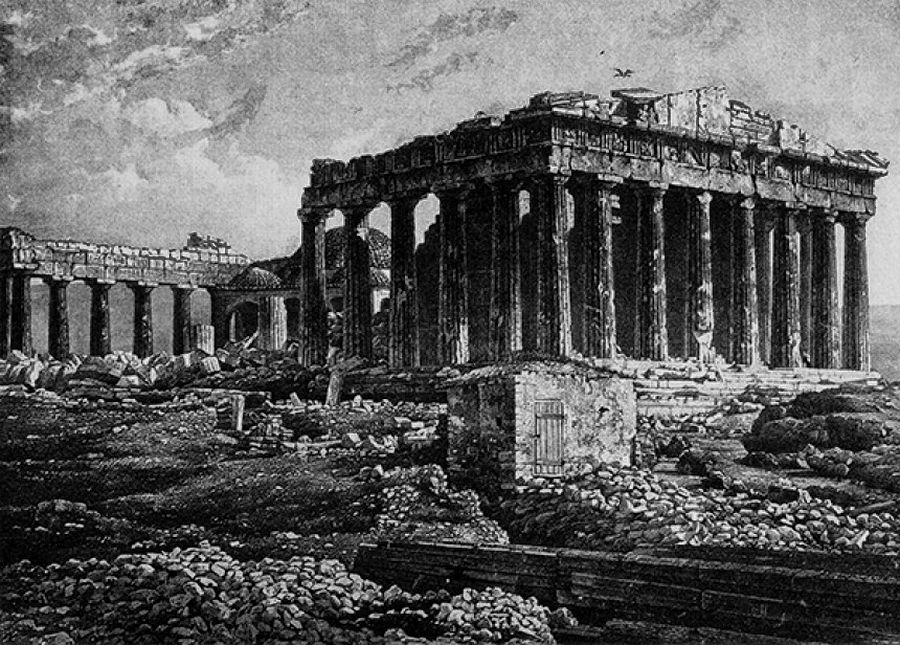
The southern and interior sections of the Parthenon suffered extensive damage during the siege of 1687 by the Venetians in the Morean War. Artillery fire struck the Parthenon, igniting the gunpowder stored within its confines, resulting in significant destruction. Additionally, between 1801 and 1812, further harm was inflicted by Elgin, who forcibly removed approximately half of the remaining sculptures from the Parthenon, along with sculptures from the Propylaea and Erechtheion.
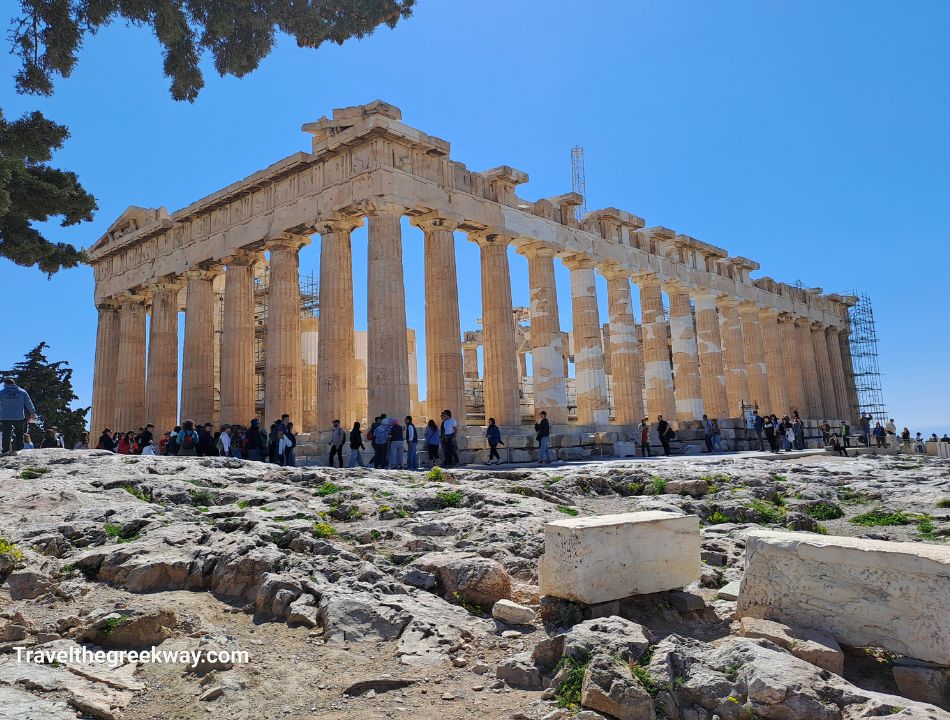
The ancient Greek stolen friezes are kept today in the British Museum (along with one Karyatis from the Erechtheion Temple). After the destruction of the Parthenon and the mosque from the bombardment, the Ottomans built another mosque in its place, a much smaller one that was demolished in 1842 by the Athenians.
The Wall of Haseki in Acropolis

The Wall of Haseki in the Acropolis is one of the few remains of the Ottoman monuments in Athens. Haseki, a tyrannical Voevoda (Military commander or governor) of Athens built a wall around the Acropolis in 1778 which was demolished except for a few rocks remaining.
You can see the remains of the wall at the beginning of the eastern entrance of the Acropolis (across from the Acropolis Museum).
Tzisdarakis Cami in Monastiraki
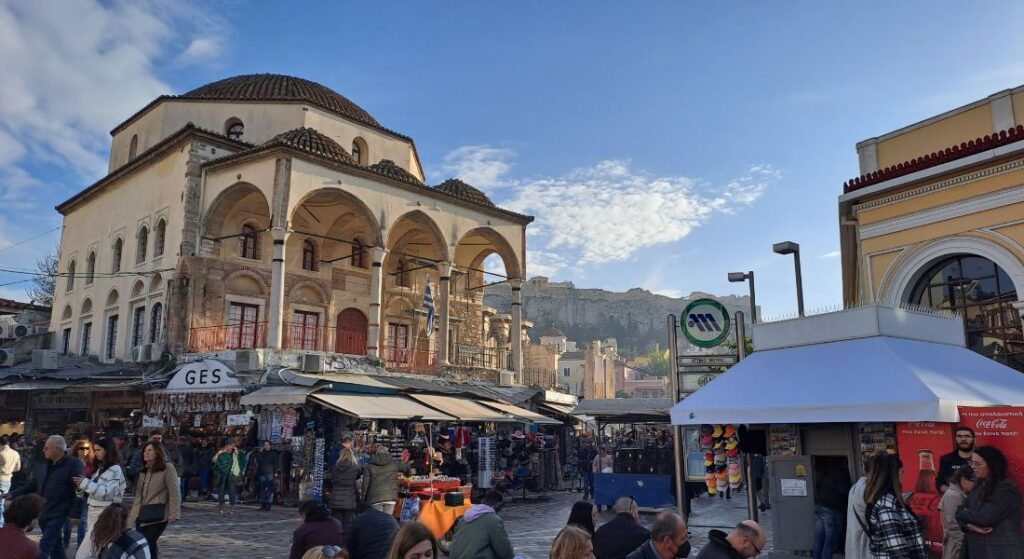
The Tzisdarakis Mosque is the most prominent Ottoman monument in Athens, in the center of the busy Monastiraki square. It was built in 1758 by the (vicious) governor of Athens at the time, Voevoda Mustafa Aga Tzisdarakis.
Right next to the Tzisdarakis Mosque is Hadrian’s Library, a Roman monument with beautiful Corinthian pillars.
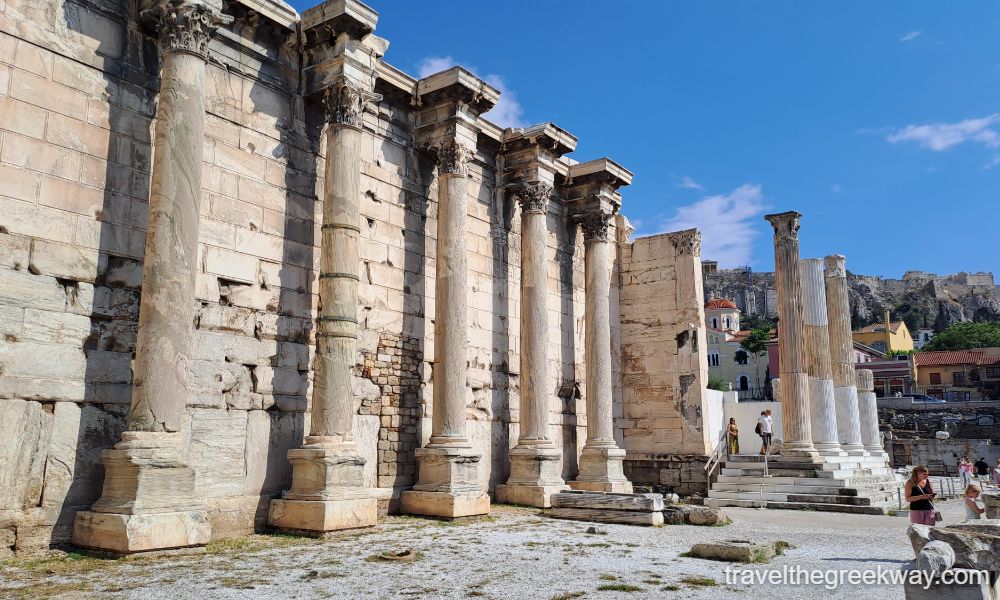
The story goes that Tzisdarakis used an ancient pillar to build the mosque which was against the general respect and superstition of the Ottomans toward the Ancient Greek Monuments. Some believe that he probably used the 4th pillar from the Temple of Olympian Zeus which is at least 1 km from the mosque.
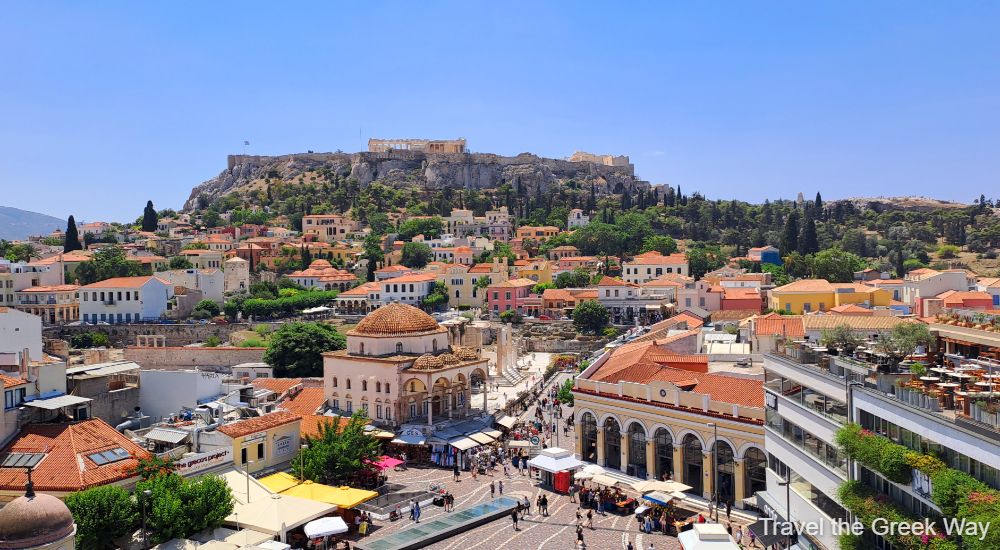
The Ottomans believed that the ruin of the ancient monuments would bring them all kinds of disasters and plagues. When the Sultan found out about the pillar, Tzisdarakis was unseated as a governor and was expelled from Athens.
The year after Tzisdarakis had used the pillar, history mentions a plague that broke in Athens, and the Ottomans attributed it to Tzisdarakis’ hybris.
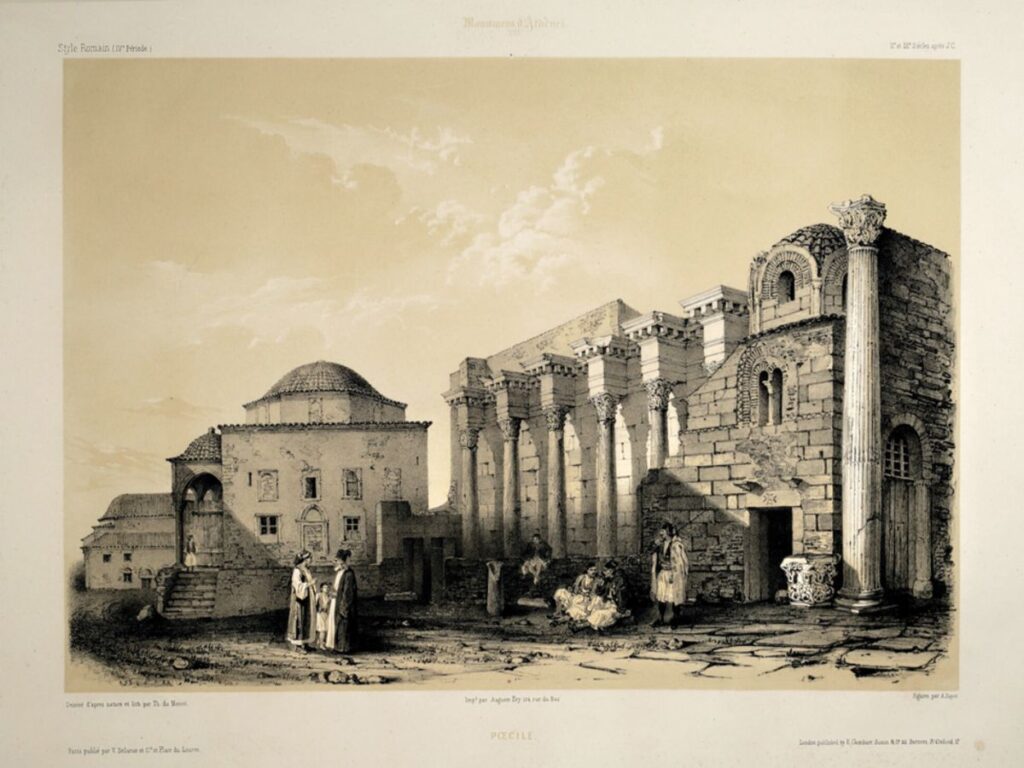
After the liberation of Athens, Tzisdarakis Mosque was used as a prison, as a warehouse, as a ballroom for the Greek King Otto in 1834, and once as a mosque again in 1966 for the exiled king of Saudi Arabia Saud to pray.
Since 1918, it has been turned into a branch of the Museum of Greek Folk Art and houses the donated ceramic collection of Vassilis Kyriazopoulos.
Currently, it is closed due to restoration works.
Note: Hadrian’s Library became the seat of the Voevoda (Ottoman Governor) and was called Voevodalik. There are no traces of this construction left today.
Fethiye Cami in Roman Agora – مسجد فتحية
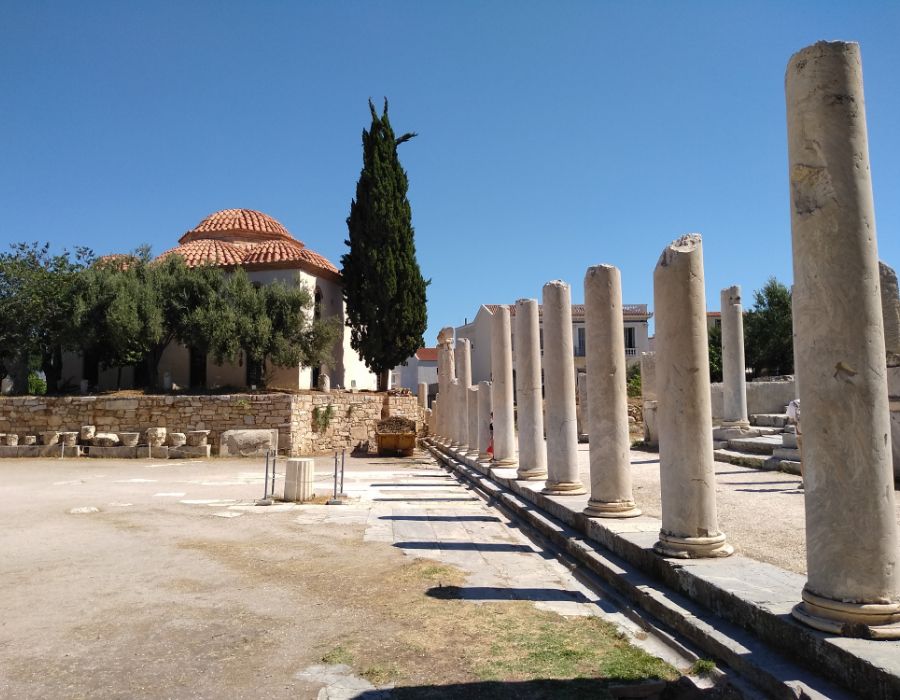
The Fethiye Cami is one of the best restored Ottoman monuments in Athens. It is also called the ‘mosque of the Conquest’ or ‘the mosque of the Wheat Market, inside the Roman Agora.
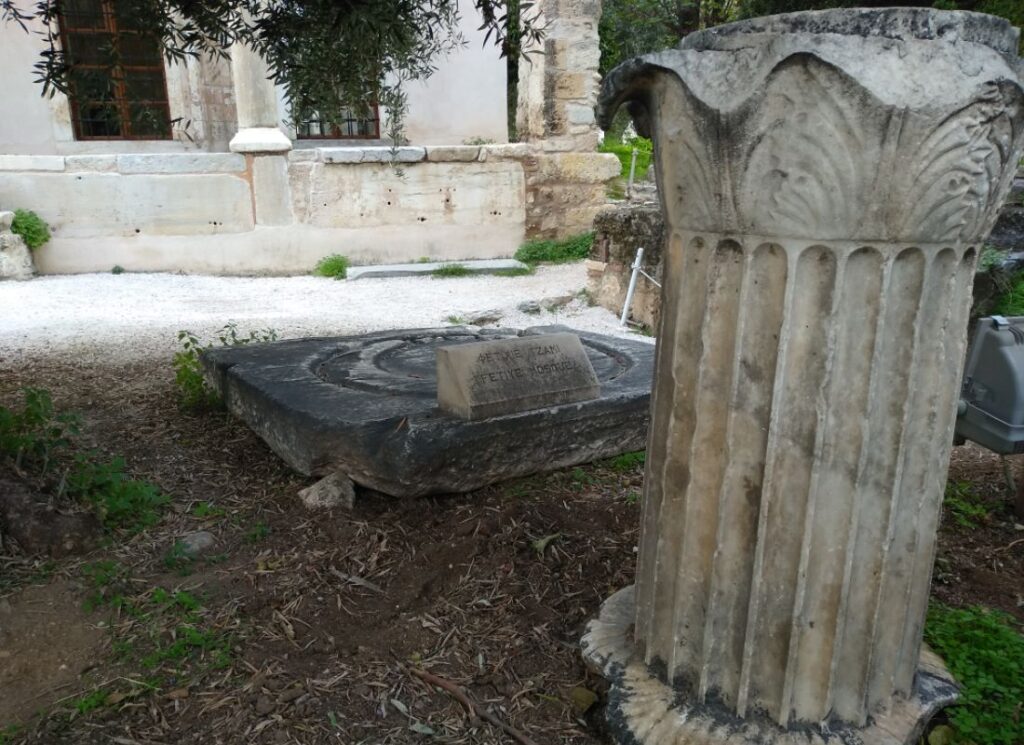
It was built between 15th March 1668 and 20th May 1670, with a large rectangular main hall, crowned by a dome supported by four pillars.
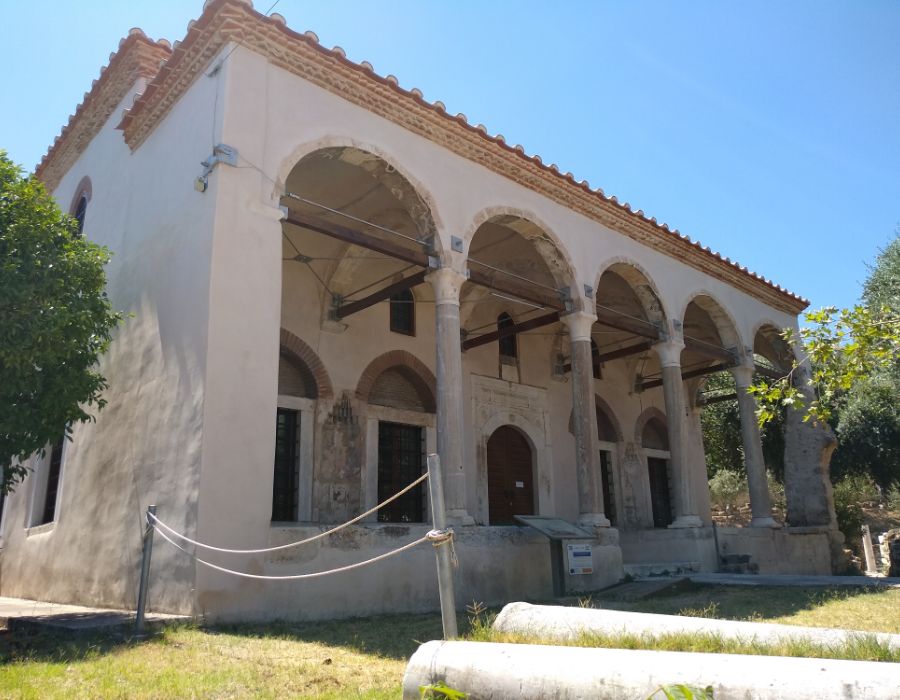
After the Greek Liberation and between 1834 and 1934, the Fethiye mosque was used as barracks and as a military prison. Since the early 20th century, it was used mainly as a storage area for the ancient findings in the Roman Agora until 2010.
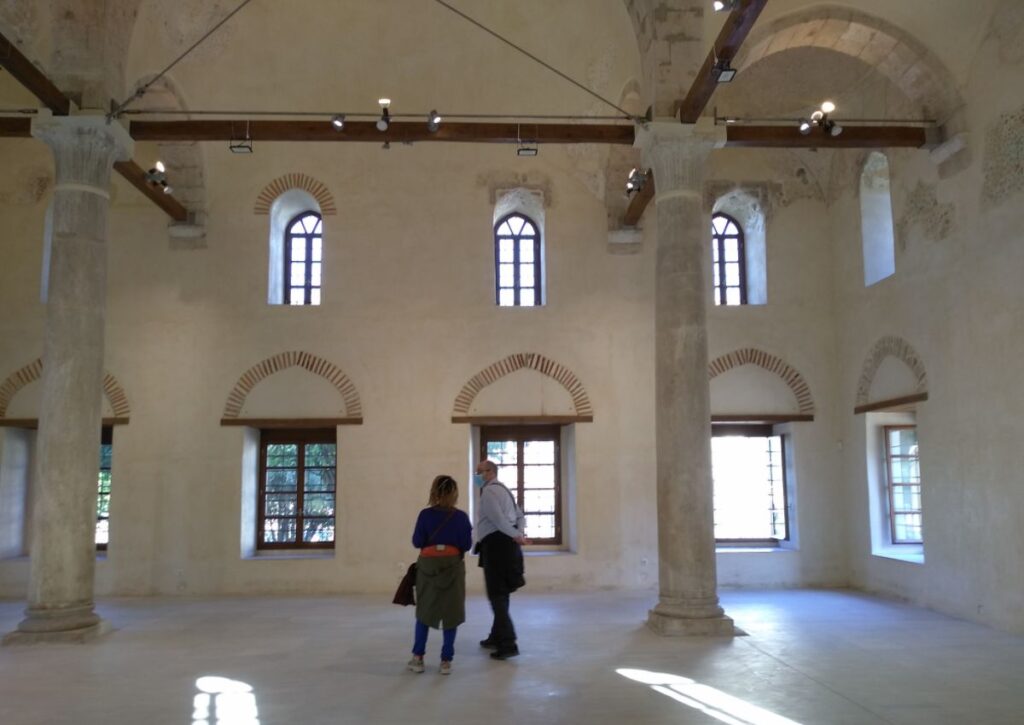
Since 2017, and after its complete restoration, it has been open to the public to visit and cultural exhibitions are held there. The entrance ticket to the Roman Agora is €8 per person for the time between April and October and €4 between November and March.
Ottoman Medresses in Athens
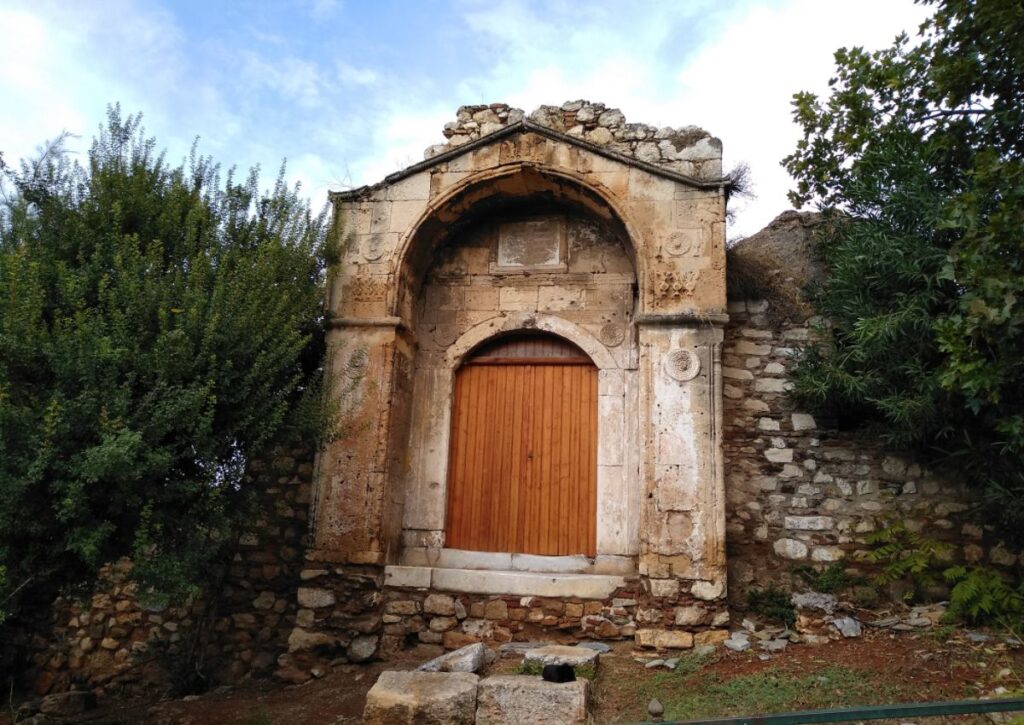
The few remains of the Medresses, the seminary of the Muslims, stand right opposite the Tower of the Winds and the Fethiye Mosque. It was constructed by Mehmet Fahri in 1721, according to the Arabic inscription on the gate.
I don’t remember how I found out that the door of the Medresses was an Ottoman monument, but I do remember how surprised I was. For the majority of passersby, it is just an old door with no obvious importance as there is no sign to indicate what this door is about.
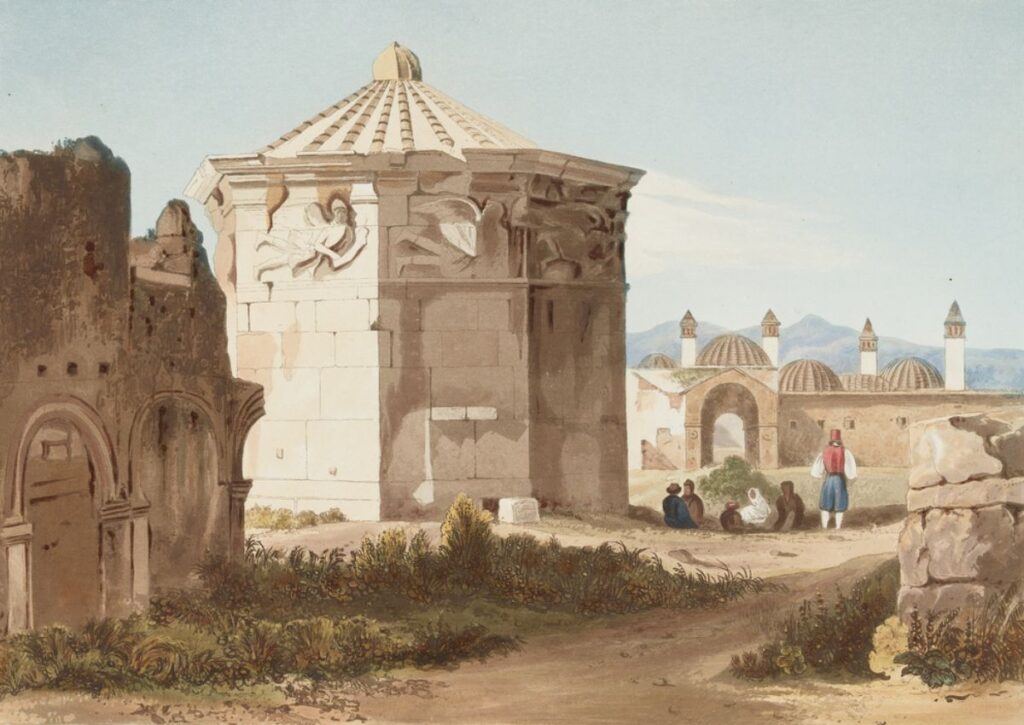
The Medresses school was designed almost like a Greek monastery, with many small rooms surrounding a courtyard with a huge plane tree at its center.
Medresses was mainly an Islamic center for spiritual learning and although mathematics or studies in logic were part of its curriculum, the main focus was religion.
During the Greek revolution, the Ottomans turned the Medresses into a prison – a use that was maintained by the Greeks too until the beginning of the 20th century.
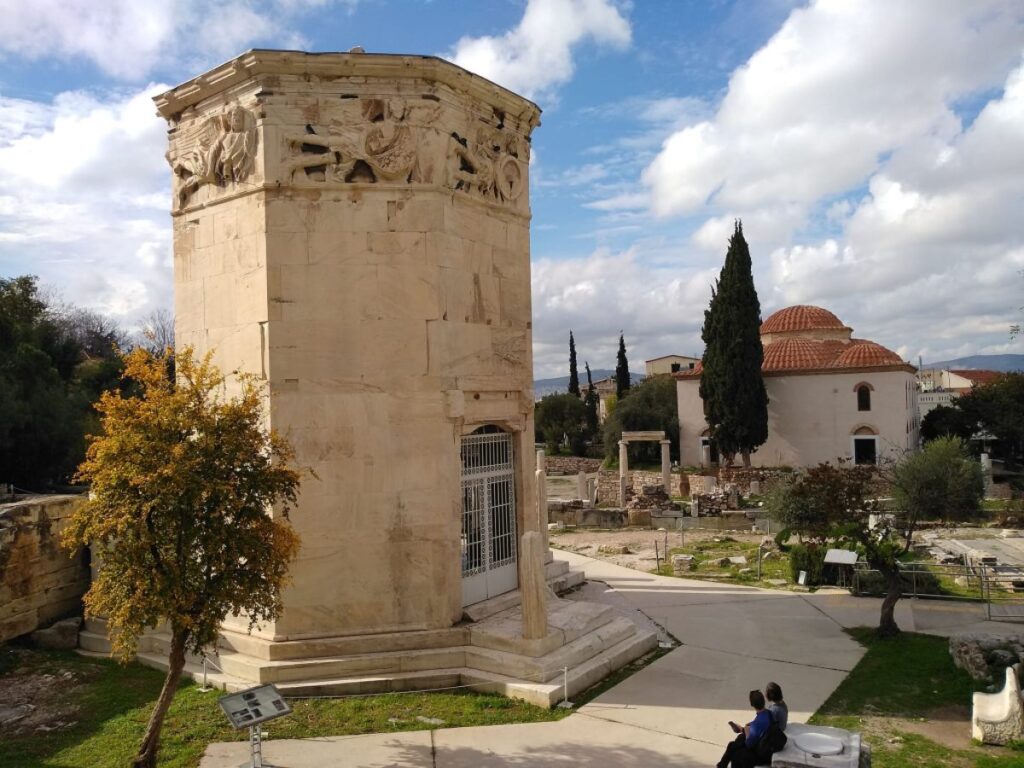
The whole building was demolished by the archaeology department in search of ancient findings. Today, it is all fenced up and kept inside archaeological items.
Note about the Tower of Winds: The Ottomans turned it into a Dervish Tekke between 1745 and 1751.
You may also enjoy 25 Top Things to Do in Athens!
The Remains of Küçük Cami
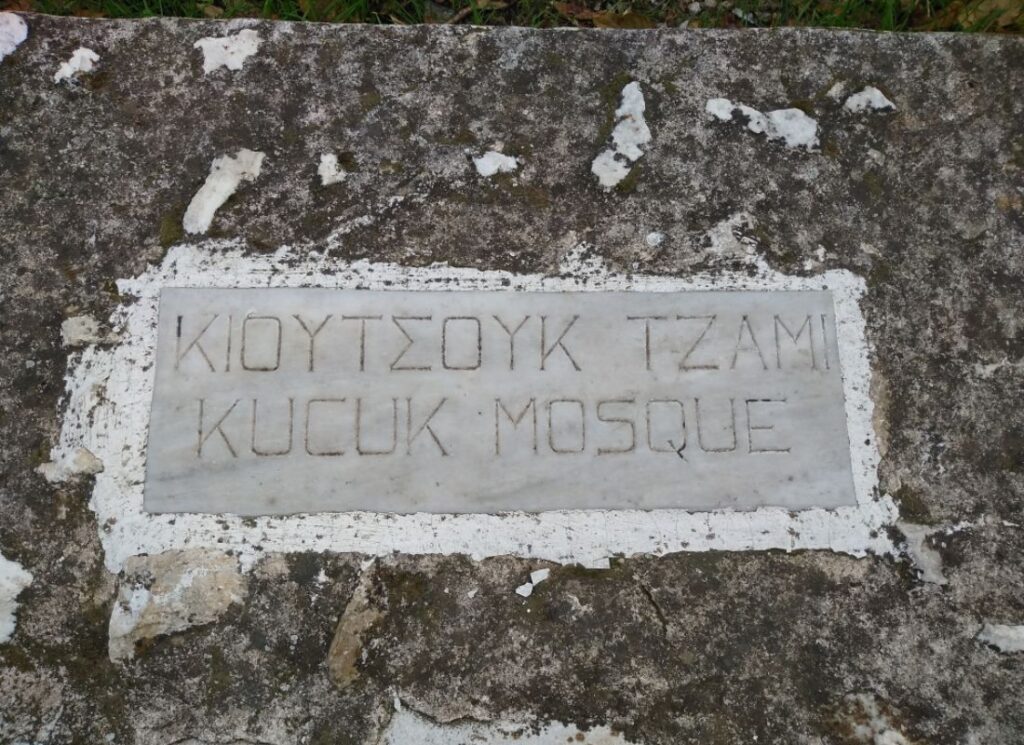
Leaving behind you the Medresses and walking towards the peripheral fence of Roman Agora, you can find the few remains of Küçük (small in Turkish) Mosque foundations in the tiny park of Panos St.
This is another invisible Ottoman monument in Athens. I had walked past this park numerous times but I had never noticed that is an actual mosque.
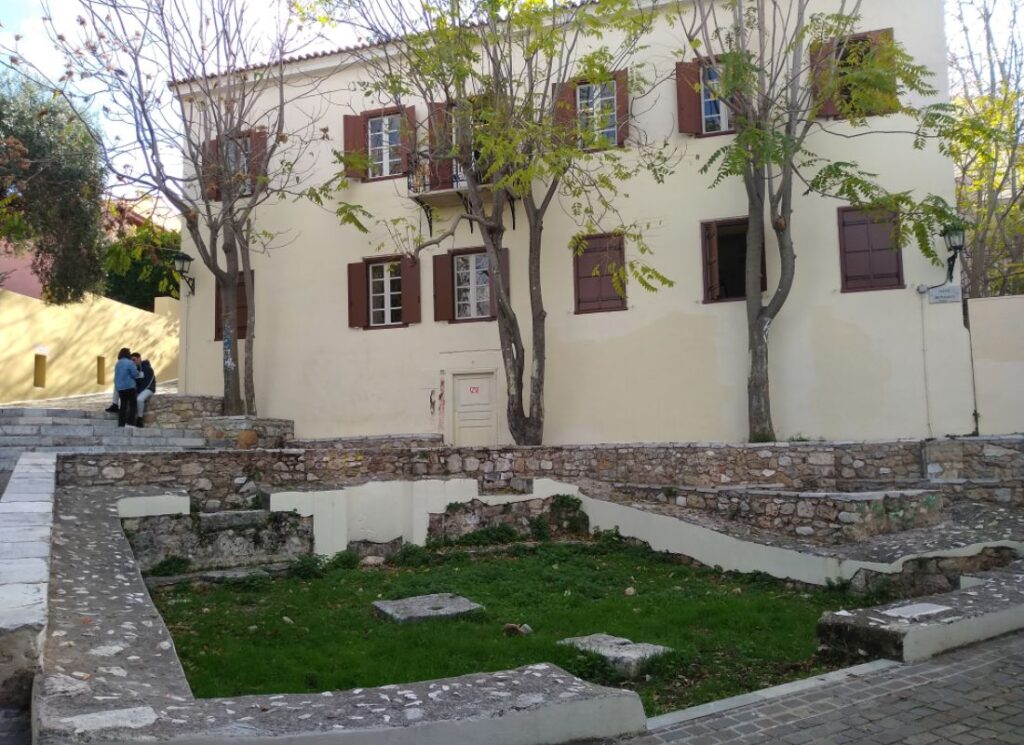
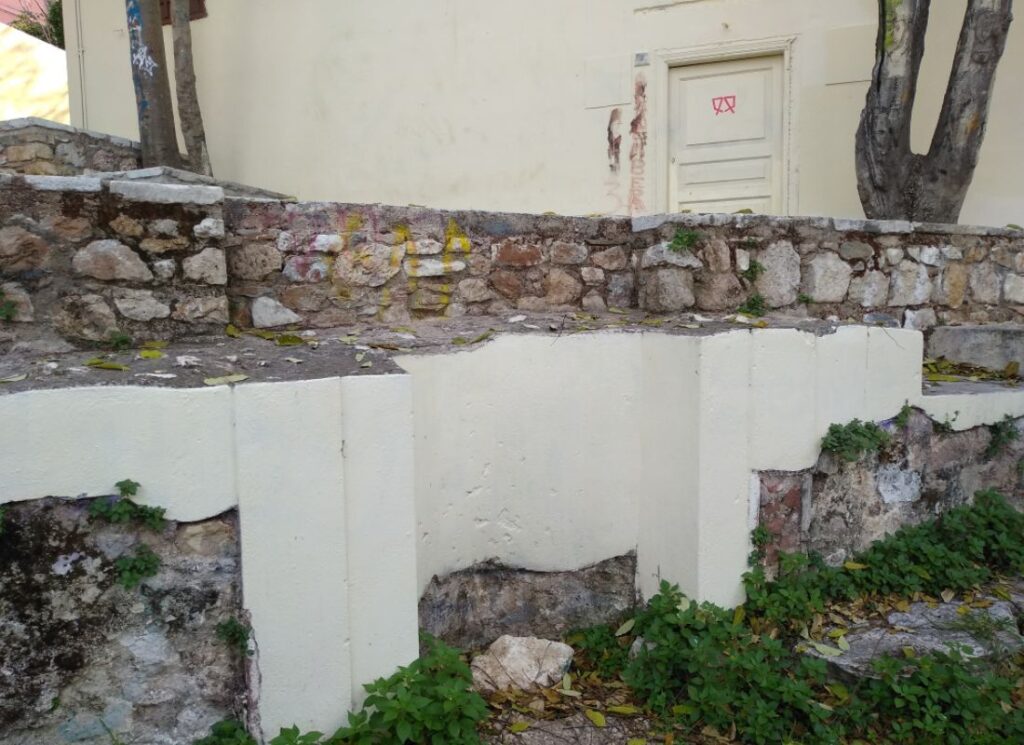
When it was still standing, it must have been a small mosque and it might have been a mosque for the Albanian Muslims in Athens. Next to the Cami used to be the hammam of Oulam Bey but there are no traces left of it at all.

There is not much to see although the semicircular shape of the mihrab is still distinguishable. It was destroyed around the time of 1840 and was re-discovered in 2004.
The Hammam of Abid Efendi (or Bath-House of the Winds)
There used to be 3 hammams in Athens but the Hammam of Abid Efendi (or Bath-House of the Winds) is the only surviving Ottoman-era at Kyrristou 8 st, very close to the Roman Agora.
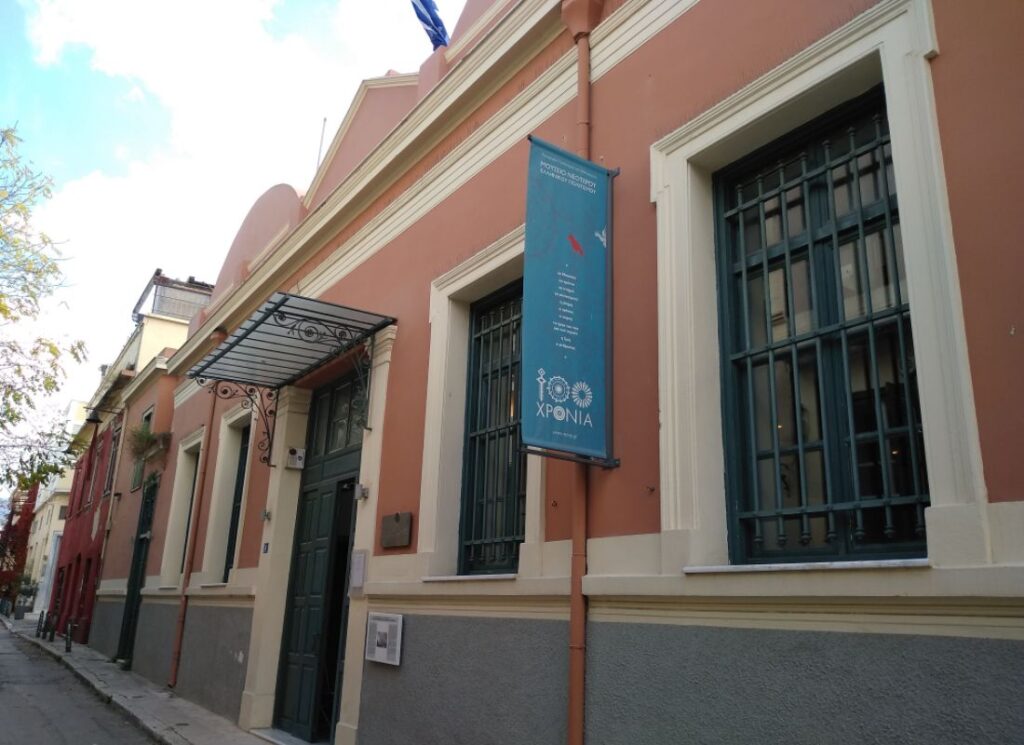
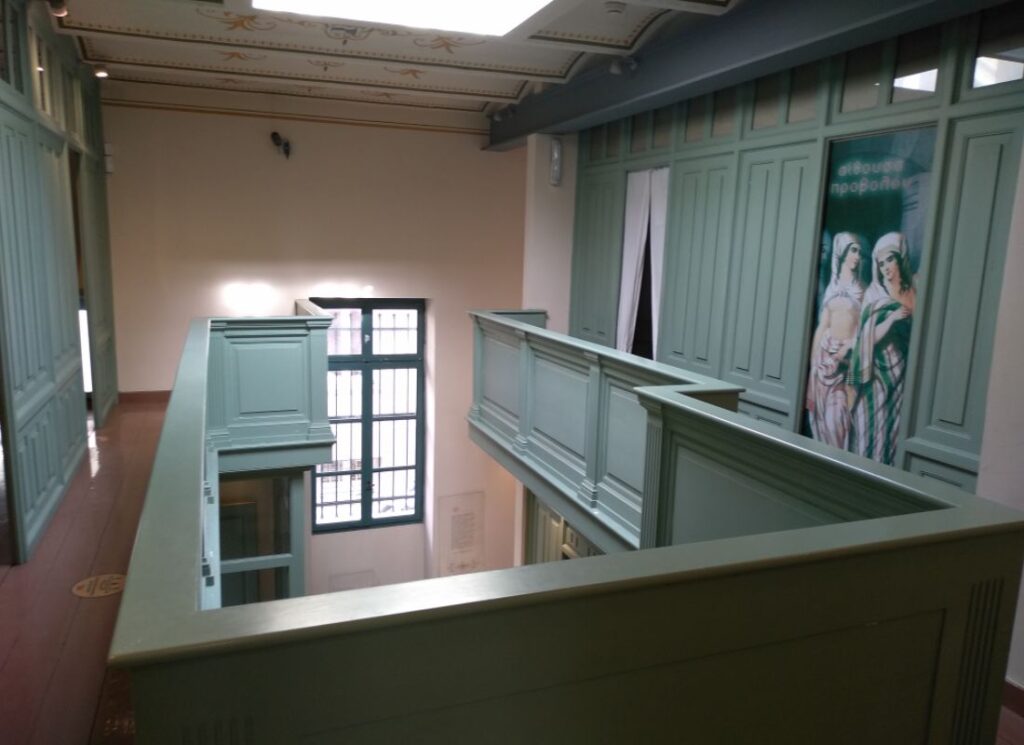
This is another impressive Ottoman monument in Athens. It was initially constructed in the 15th century, but there have been many alterations over the centuries. Its present facade looks more like a Greek neoclassical than an Ottoman hammam, so it is very easy to pass by it.
I loved visiting it, I had no idea that such a wonderful building was in Plaka which I had passed by and had never noticed before. I urge you to visit it as well as it is a real authentic experience from the old times.
The Hammam of Abid Efendi continued working as a bath until 1965. Following its restoration, in 1998, it is now used for various exhibitions as a branch of the Museum of Greek Folk Art.
Daily open between 9 – 16.00, Tuesdays closed. The general ticket is €2.
The Benizelos Residence in Plaka
The Benizelos Residence in Plaka is considered to be the oldest house in Athens and the only still existing residence with the Ottoman architectural form known as Konaki.
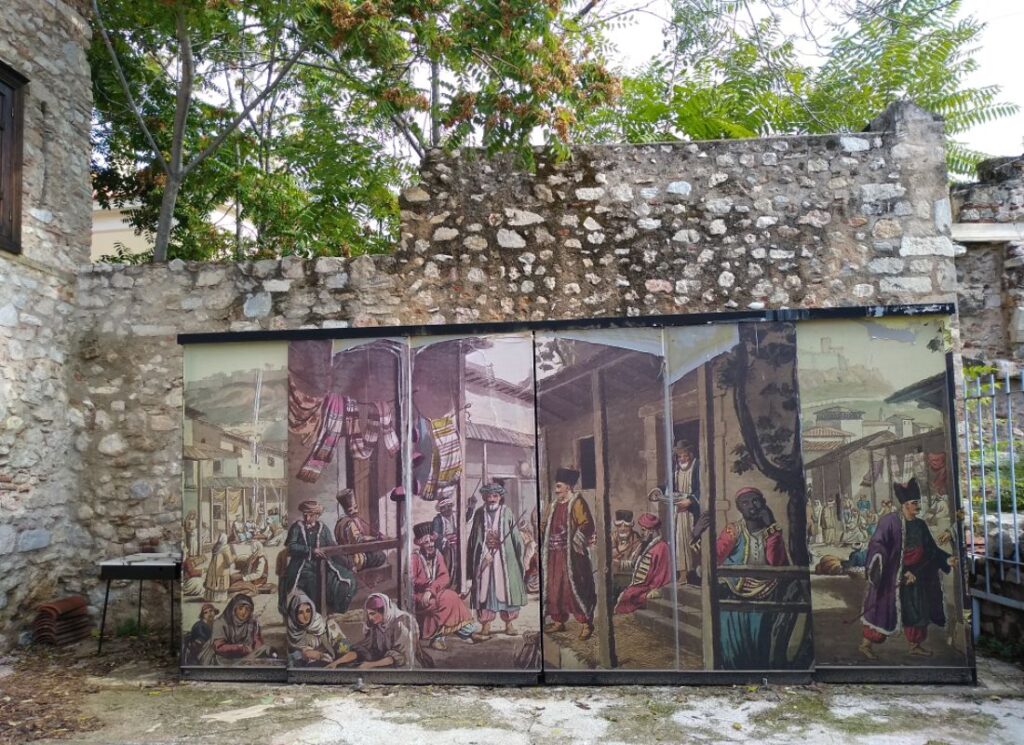
The house has two floors: the ground floor (or katoi) with the food storage rooms and the upper floor (or anoi) with the residential rooms – the ontas (bedroom and sitting room) and the hayiati.
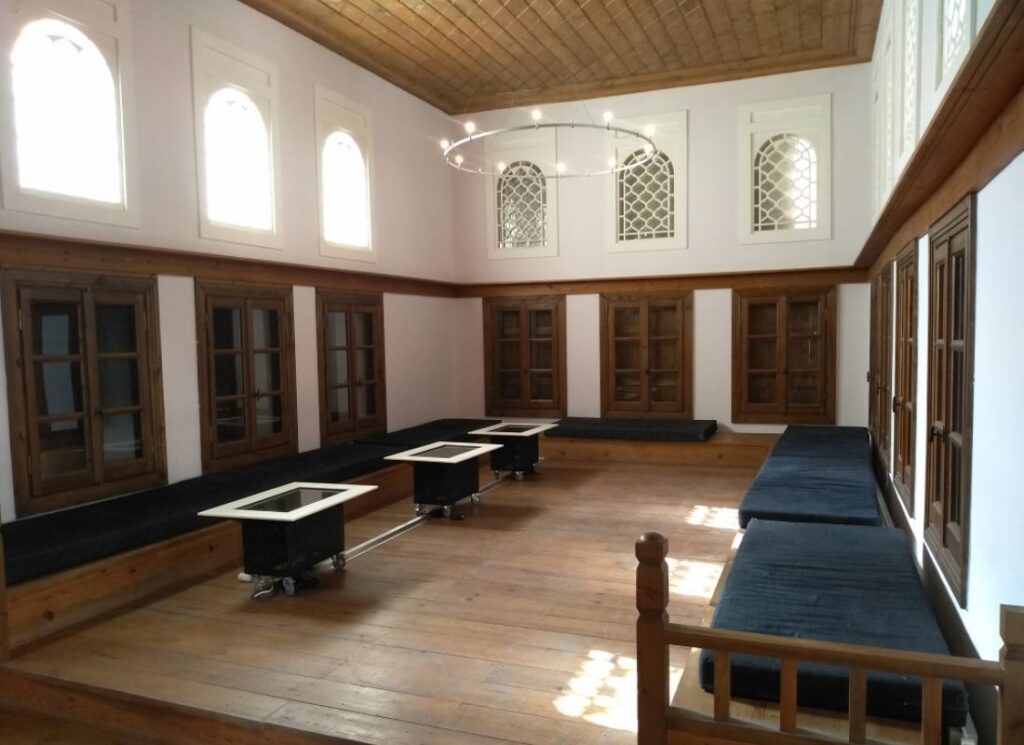
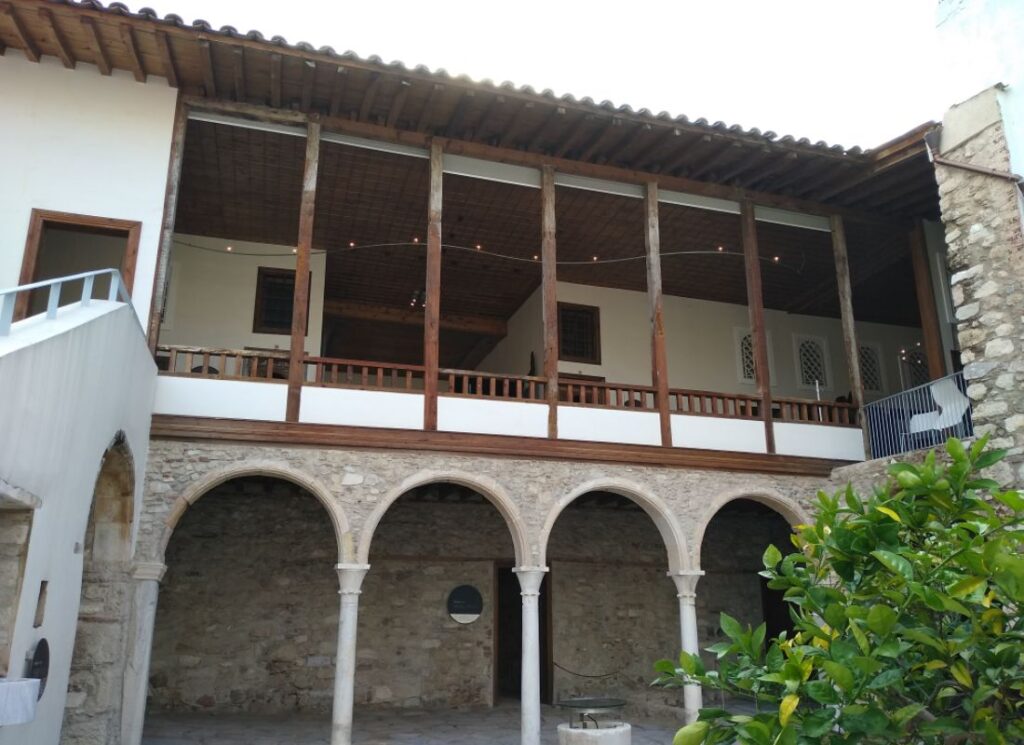
One of the residents of the house, Paraskevi or Rigoula Benizelou born in 1522, has become a saint in the Greek Orthodox Church, widely known as Saint Filothei.
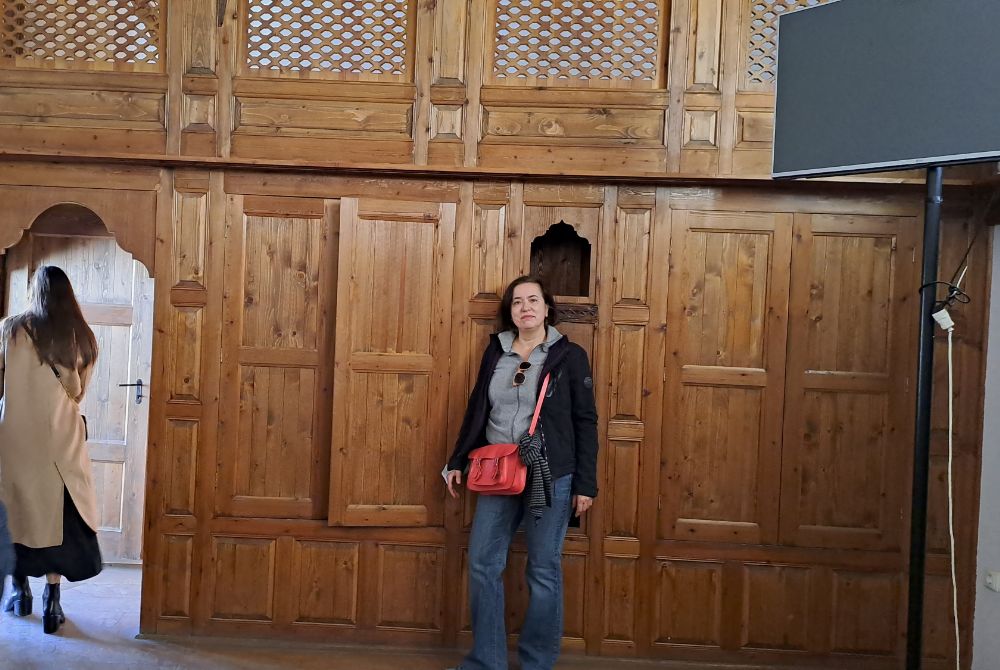
You can visit it at Adrianou 96 in Plaka, on Tuesday, Wednesday, and Thursday between 10:00 – 13:00 and on Sundays between 11:00 – 16:00. Free entrance but you can leave a donation if you want to.
Building of Ottoman Military Commanders
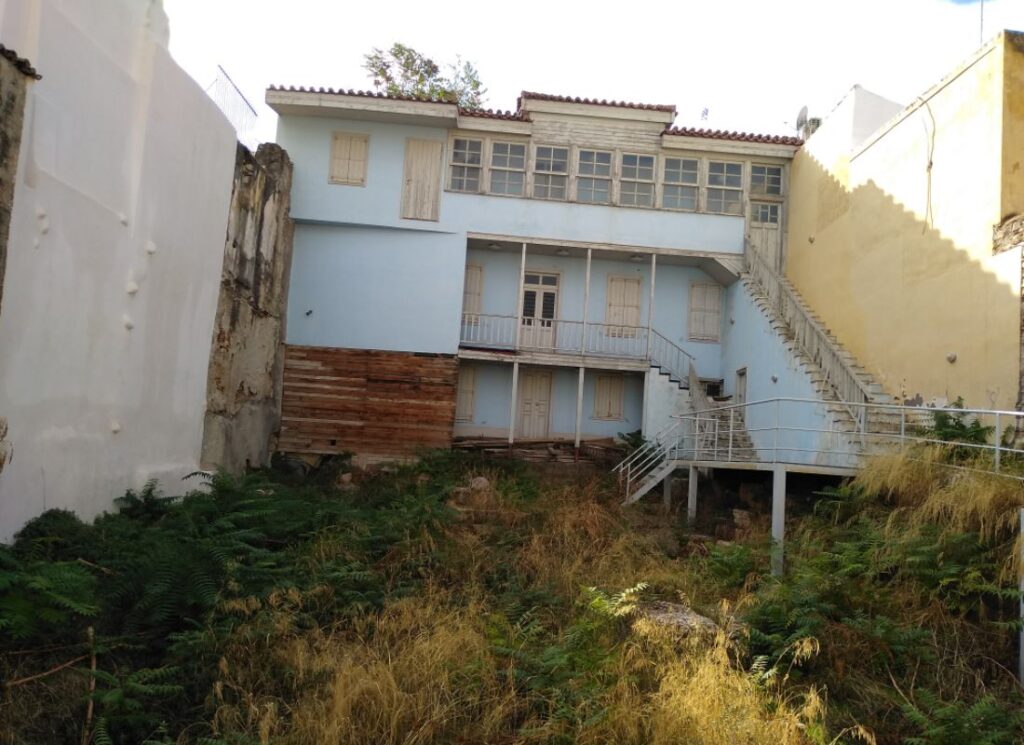
In Tripodon 32 st. in Plaka stands (partially) renovated but not accessible to the public a beautiful 3-floor Ottoman house. This was made widely known to the public as it was used as the setting of one of the most famous Greek movies of 1965 (Greek title “Η δε γυνή να φοβήται τον άνδρα” – The woman must fear the man). Back in 1800, it housed the commanders of the Ottoman Military.
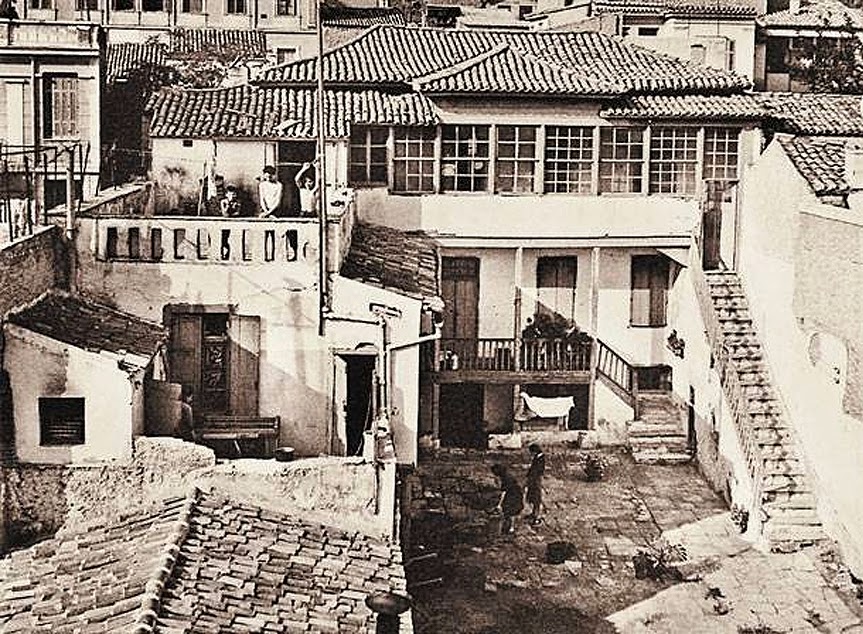
While the Greek Ministry of Culture was renovating it, they discovered many archaeological findings so this house needs to be decided on how it will be developed, perhaps as a museum.
National Bank of Greece Cultural Foundation
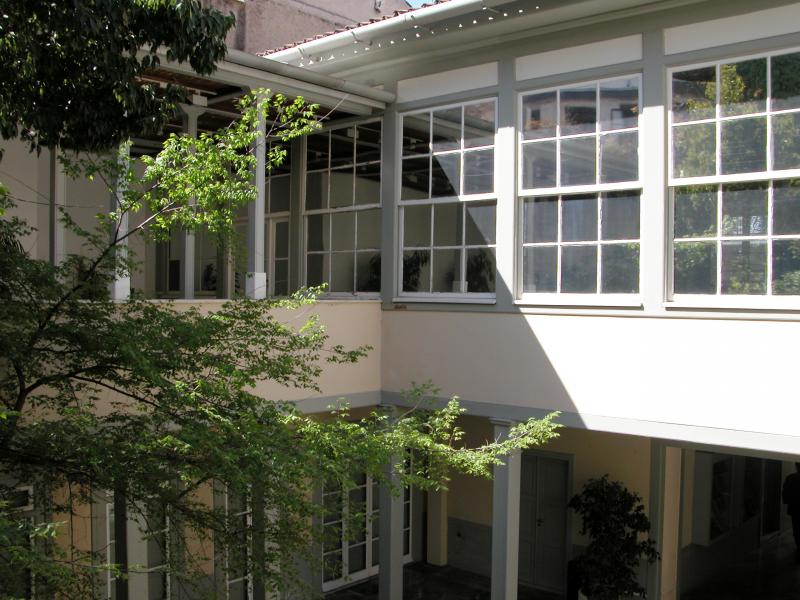
Situated on Thoukididou 13 St. in Plaka, this minimalistic two-story stone mansion was originally built in the 1700s, as the private residence of an Ottoman family.
After Greece’s independence, it became a High School of Athens, the Athens Garrison Headquarters, the High Court, and after 1922, a temporary home for the Greek refugees from Asia Minor.
In the 1950s the National Bank of Greece bought it and has been using it as a house for its Cultural Foundation ever since.
Sir Richard Church’s House in Plaka – Karakoli
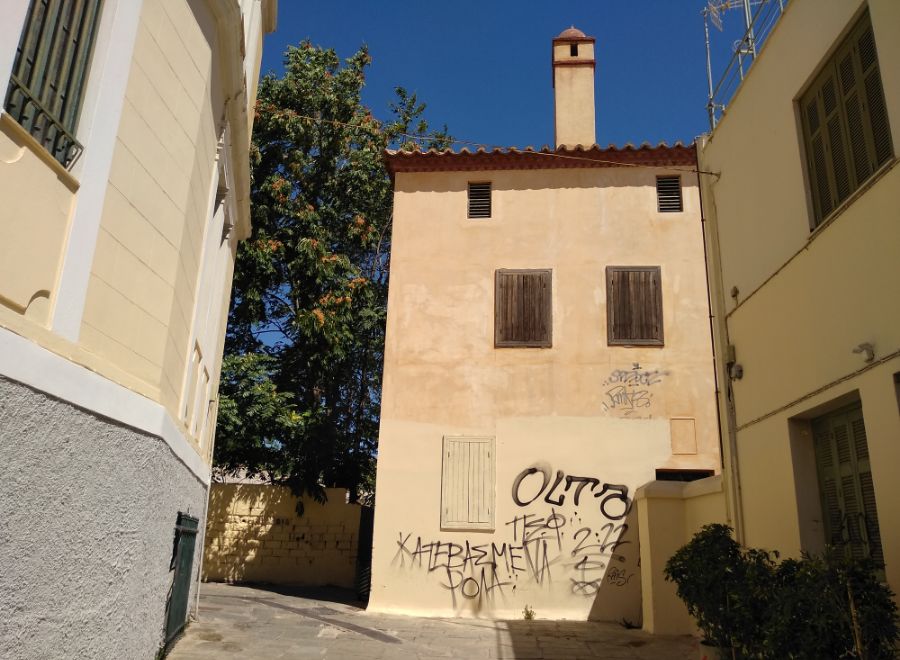
A particular tower-looking building with an elongated chimney – an unusual sight in Athens – was built on Scholiou 5 st. in Plaka Athens in the 18th century by the Ottomans as a police station (Karakol).
It was sold to the British historian and philhellene, George Finley, and later on to his friend Sir Richard Church, a great philhellene who fought along with the Greeks against the Ottomans.
Sir Richard Church died in Athens on March 8th, 1873, and was buried in the First Cemetery of Athens.
Unique Fountain of Voevoda Haseki Hatzi
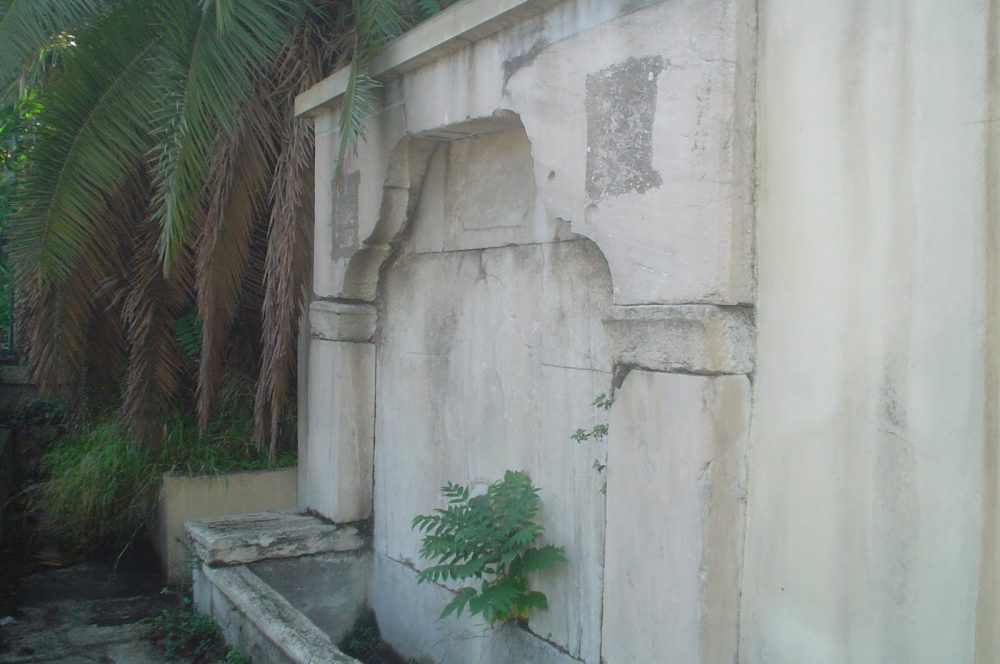
The fountain is the only surviving Ottoman fountain today in Athens and was part of Voevoda Haseki Hatzi’s summer house (Konaki) where today stands the Agricultural University in Iera Odos (the ancient Sacred Road that begins from Kerameikos Site).
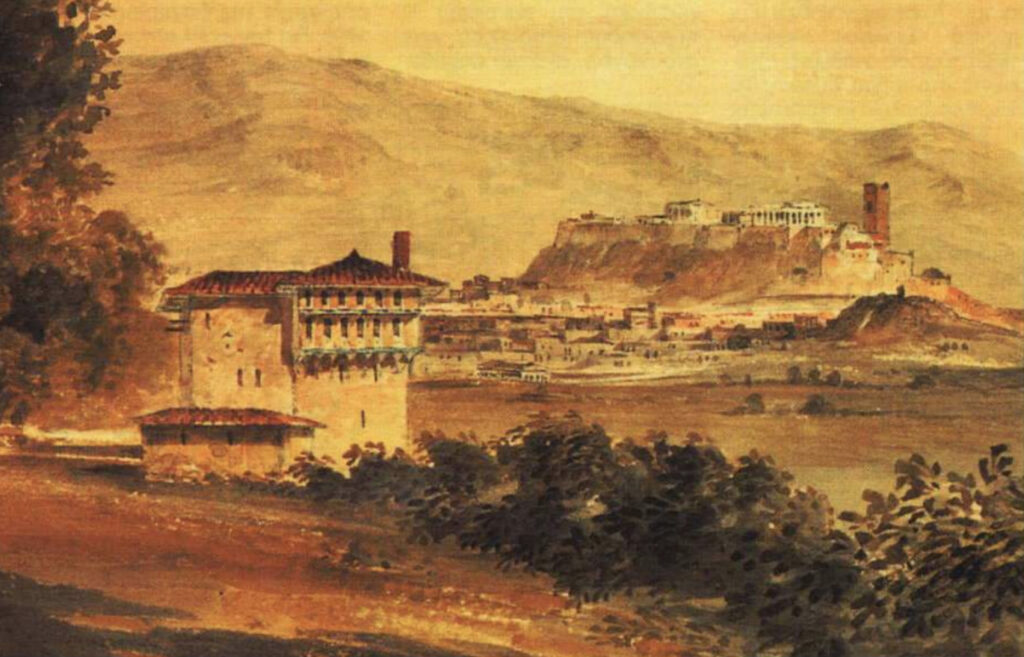
There is nothing left today of Haseki Konaki besides the fountain. If you want to see the fountain, you have to take a taxi to the university, preferably in the morning when it is still open.
Benaki Museum of Islamic Art
The Benaki Museum collection of Islamic art, which includes examples of all its local variations from as far as India, Persia, Mesopotamia, Asia Minor, the Middle East, Arabia, Egypt, North Africa, Sicily, and Spain, ranks among the most important in the world.
If you are interested in Islamic Art, a visit to the spectacular Benaki Museum of Islamic Art is a total must.
Address: Agion Asomaton 22 & Dipilou in Thisio, Athens (closed on Tuesdays).
Gennadius Library
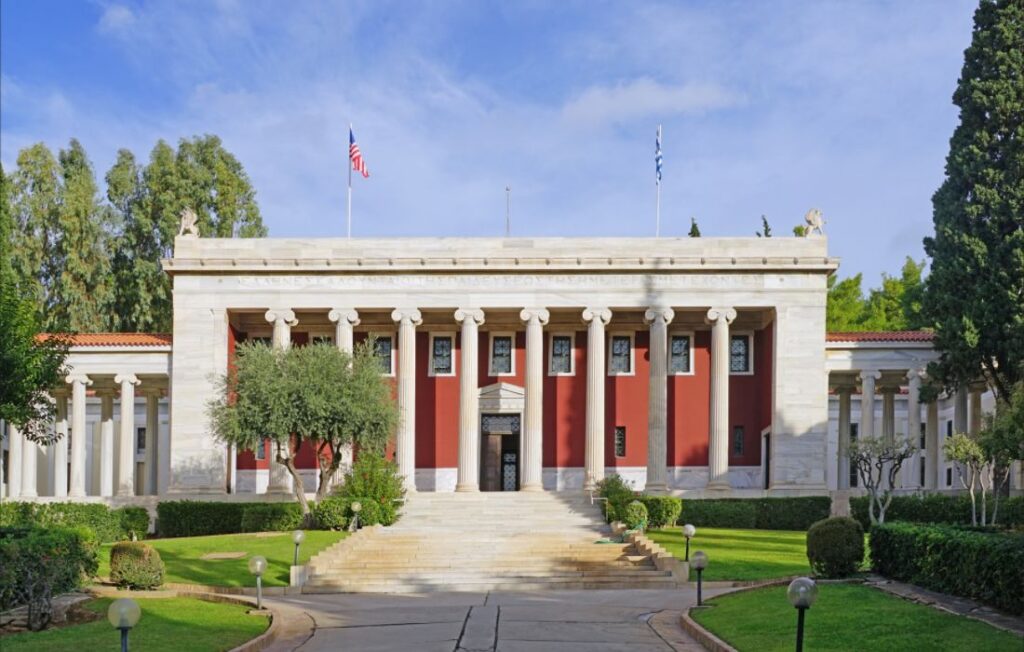
In Souidias 54 St. Kolonaki area in Athens stands the exquisite Gennadius Library containing more than 1,500 books, inscriptions, letters, etc. from Ottoman history. 16 of the Library’s oldest books, printed between 1470 and 1500 are about Turkey’s history.
If you wish to visit the library you will need to make an appointment by sending an email to gen_recep@ascsa.edu.gr mentioning which books you would like to have a look at from the Library’s collection here.
Other Ottoman Mosques that no longer exist in Athens
- Yeni mosque, where the Ottoman cemetery used to be, at Voulis & Navarhou Nikodimou
- Kolona mosque, at Flessa & Adrianou st.
- Softa mosque, at Kapnikarea & Pandrossou st.
Private Tour to Ottoman Monuments in Athens with Licensed Guide
Would you like to visit all those historical monuments and have a specialized and knowledgeable local bring history to life? Book this fantastic private tour with a licensed guide, who is specialized in Ottoman History in Athens!
Athens Quick Reference
Did you visit the Ottoman Monuments of Athens? Let me know what you think about it in the comments, I’d love to hear whether I managed to get it onto your bucket list! Till next time, Evgenia❤️
My Most Popular Articles
- Greece Packing List – What to pack for a 10-day trip to Greece
- First Time to Greece – Most Important FAQ
- Mamma Mia Greece Locations – All the mainland and island shooting areas in Greece
- Athens Hotels Near Acropolis
- Apartments Near Acropolis
Essential Travel Resources for Greece
- ‘Hello’ and ‘Thank You’ in Greek: “Ya sou” and “Efharisto”
- Booking.com: I use Booking.com mostly for Europe.
- Expedia: I use Expedia for the rest of the world.
- All-Inclusive Resorts in Greece
- FerryScanner to book ferries to the Greek Islands
- Rent an Affordable Car in Greece
- Athens Metro Website (timetables and ticket info)
- Trains (Hellenic Train)
- Public Buses KTEL
- Get Your Guide: For all your day or multi-day tours and city guide needs, I use Get Your Guide
- Emergency Numbers Anywhere in Greece: AMBULANCE 166 – FIRE 199 – POLICE 100– EMERGENCY NUMBER 112
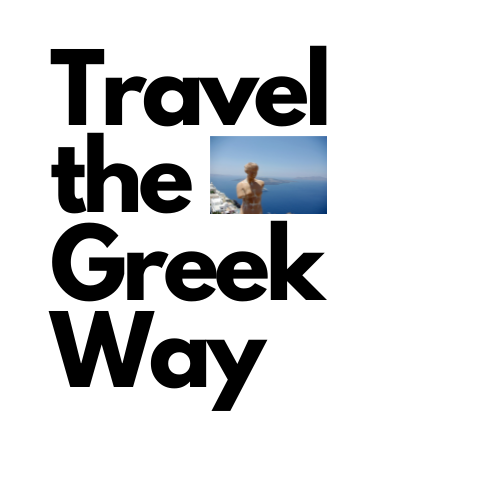
This is brilliant! Thank you! I hadn’t known about it until today. Next time in Athens it behooves me to visit all these monuments.
Is there a book version of this material, is it only on the web?
Dear Yannis,
I am glad you found my post on Ottoman monuments in Athens useful 😀 I am sure there are some books but surely there are all kinds of academic resources online. If you are next time to Athens, I can organize a private tour so that you can visit them all with a professional and knowledgeable guide. Best wishes from Athens, Evgenia
Evgenia
Wow fascinated by your article. I was on a short vacation to Athens and only read your article whilst leaving Athens back to London. I wondered about ottoman relics in Athens but without knowing instantly recognised the Tzisdarakis Monastiraki Sq as a mosque. You just confirming it was amazing coincidence.
Most definitely would book a tour with you if I return and will recommend.
Thank you very much for your amazing comment Anwar, I’m glad you enjoyed the post!
Do let me know when you will be back to Athens and we will definitely tour the monuments!
Best, Evgenia